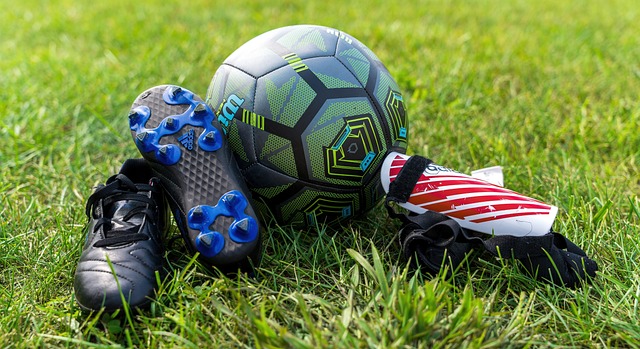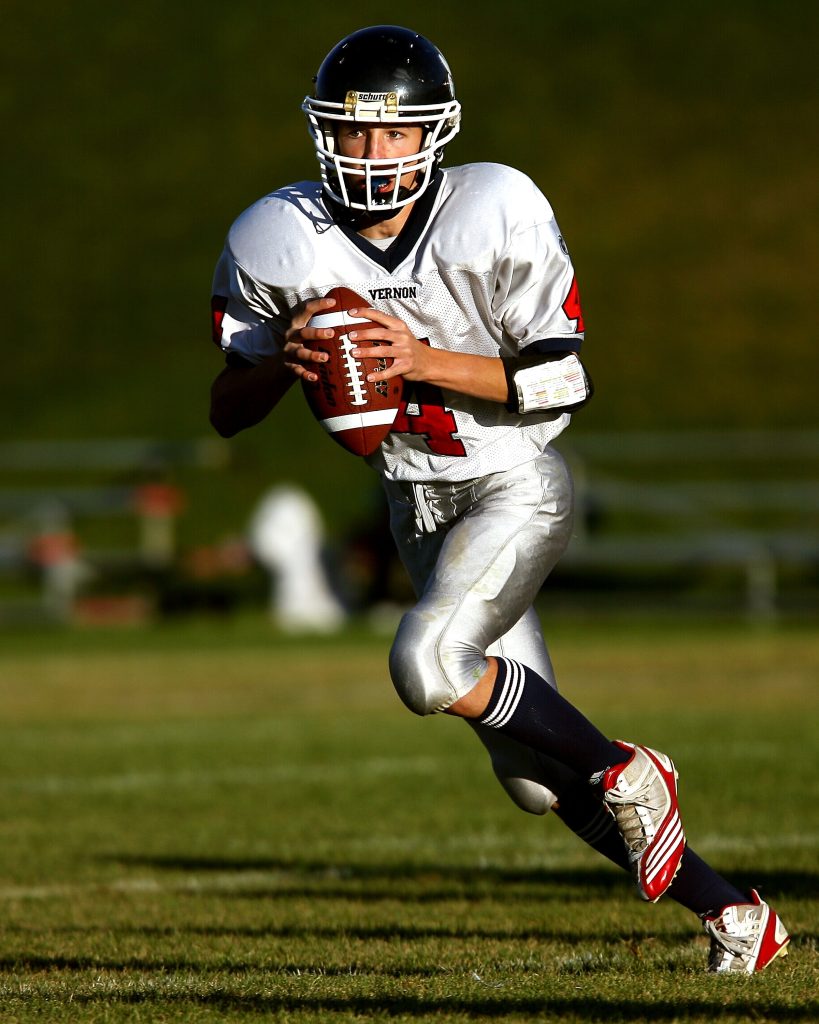Figuring out the difference between soccer and football cleats may not be easy for someone who does not play sports. Are you just getting started in the world of sports and not too familiar with the difference between the two? Perhaps you are on the market for a new pair of cleats for your favorite sport and are concerned about grabbing the wrong one.
This article will help point out the major differences between a soccer cleat and a football cleat and should guide you in choosing the right cleat for the right sport. The major differences between the two that we will explore are the weight, the size, the shape, the studs, the purpose of the cleat, and of course how safe they are.
Before we get into the nitty-gritty details of the two types of cleats, it is important to the a complete understanding of soccer and football. Get a complete understanding of soccer here. Soccer is referred to as football everywhere else in the world but in the United States. This is because The US already has an exclusive sport (played only in the US) called football (American football elsewhere in the world). So they prefer to call it soccer just to differentiate it from American football. Alright! Let’s get started.
Weight
While soccer and football cleats may look similar to those unfamiliar with the nuances, the weight of these specialized shoes plays a pivotal role in enhancing performance in each sport. In soccer, the cleats are deliberately designed to be lightweight, facilitating not only agility but also precise ball control, which is indispensable in a sport primarily played with the feet. The reduced weight isn’t a mere fashion statement; it’s a strategic advantage. It allows players to perform complex dribbling maneuvers, laser-accurate passes, and potent shots with a heightened sense of ease and precision.
Conversely, football cleats carry a bit more weight, and this isn’t a design flaw but a purposeful feature. The additional heft in football cleats is critical for maximizing grip on the mostly grassy surfaces where football games take place. This enhanced traction is essential for explosive sprints, abrupt stops, and quick lateral movements—key elements in a sport where seconds can change the tide of the game.
In summary, while soccer cleats prioritize lightness for agility and intricate footwork, football cleats are intentionally heavier to offer better traction and support during high-contact play. The weight of the cleat in each sport is not arbitrary but is carefully calibrated to meet the specific needs of the athletes and the demands of the game. Your choice between lightweight soccer cleats and heavier football cleats should hinge on your sport-specific performance needs.

Size of the cleat
When it comes to sports equipment, every detail matters, right down to the size of the cleats worn during play. Although it might be tempting to think of a size 10 cleat as a universal standard, the reality is far more nuanced when comparing football and soccer cleats. A size 10 football cleat noticeably dwarfs its soccer counterpart, and this difference in size is far from accidental—it’s a carefully considered design choice that reflects the unique challenges of each sport.
At first glance, the football cleat’s larger size might simply seem like added bulk, but it serves a crucial, performance-enhancing function. These cleats are engineered with an additional layer of padding to cushion the foot and ankle from the hard-hitting impacts that are par for the course in football. In a sport characterized by frequent tackles, abrupt stops, and high-speed collisions, this extra padding is not just a luxury; it’s a necessity. The robust structure offers enhanced protection, acting almost like an armor, shielding players from potential injuries and allowing them to focus on the tactical elements of the game.

On the other hand, soccer cleats are noticeably smaller and more streamlined, which aligns perfectly with the sport’s emphasis on agility, speed, and intricate footwork. The reduced size is intentional and not just an aesthetic choice. By minimizing the amount of material used, manufacturers are able to create a lightweight shoe that offers maximum tactile sensitivity, allowing players to feel the ball at their feet as if it were an extension of themselves.
Soccer is a sport where milliseconds and millimeters can make the difference between a game-winning goal and a missed opportunity. In this context, the less-is-more design of soccer cleats provides players with the agility to execute split-second maneuvers, from dodging defenders to taking razor-sharp corners.
To sum it up, the disparity in size between football and soccer cleats is far from a mere quirk of design; it’s a purposeful feature rooted in the distinct demands of each sport. While the larger, more padded football cleats act as a protective shield during high-impact plays, the sleeker, smaller soccer cleats prioritize agility and tactile connection with the ball. Understanding these nuanced differences is not just a matter of curiosity; it could very well affect your performance on the field. Choose your footwear wisely; your game might just depend on it.
Spikes or Studs of the cleat

Soccer cleats and football cleats are both designed to give players the traction they need to make sharp cuts and perform at their best. However, there are key differences between the studs or spikes of the cleats that players should be aware of.
Soccer cleats have shorter and more rounded studs or spikes, while football cleats have longer spikes that are designed specifically for grass fields. The long spikes of football cleats are more effective at providing traction on grassy surfaces while soccer cleats are better at providing traction on hard surfaces like the ground.
Support and protection
Indeed, safety, protection, and comfort are key considerations when choosing cleats and are a major emphasis by branded cleat manufacturers. We all want to see athletes safe and stay healthy just as much as we want to when we play these sports. So, the main difference between soccer cleats and football cleats is the level of support and protection they provide.
Soccer cleats are typically lighter and provide less support than football cleats. This is particularly true by virtue of extra padding, thicker material implemented in making football cleats. As a result, soccer cleats are usually not as durable or long-lasting as football cleats.
Purpose
In fact, the type of cleat to grab depends on which of the two sports types you want to play. That is the purpose or reason behind the choice you make. Soccer cleats are designed to provide traction and support for the quick, lateral movements that players make to keep up with the speed of soccer games. Whereas, football cleats are designed for the stop-and-start and linear movements associated with football.
Conclusion
In summary, the main differences between soccer cleats and football cleats are weight, size, spikes, support and protection, and purpose. Soccer cleats are designed to be lightweight yet provide good traction on a variety of surfaces, while football cleats are comparatively heavier.
A football cleat is larger than a soccer cleat of the same size. Soccer cleats have shorter and more rounded studs or spikes, while football cleats have longer spikes that are designed specifically for grass fields. Hope this helps you make the right choice and improves your understanding of cleats.


